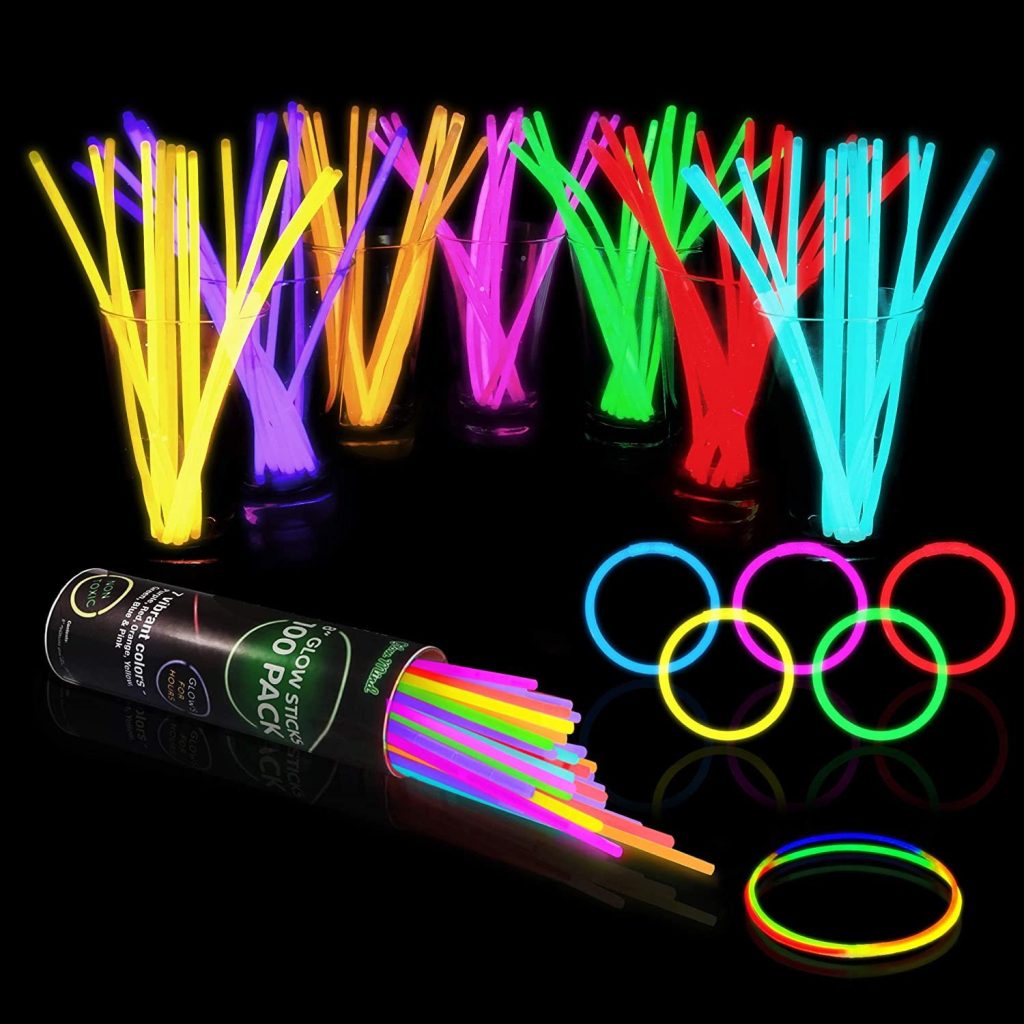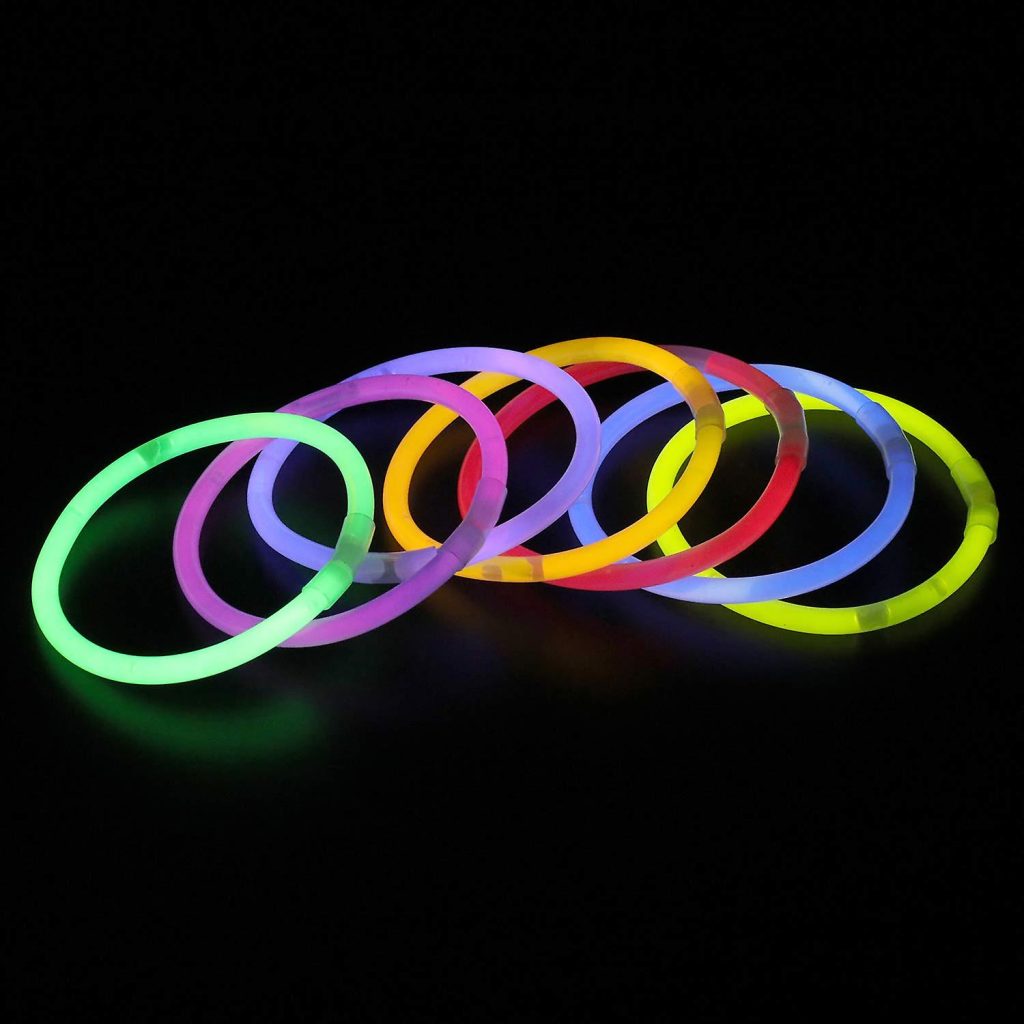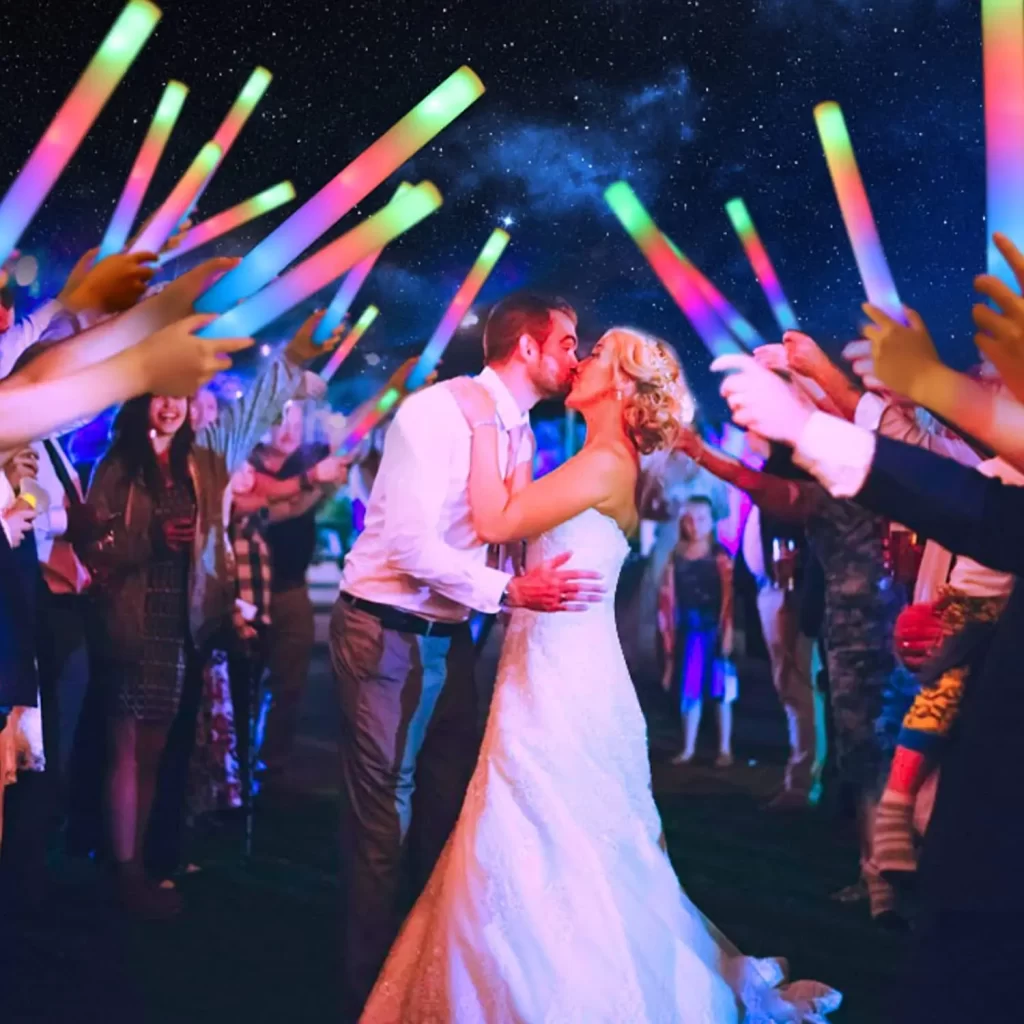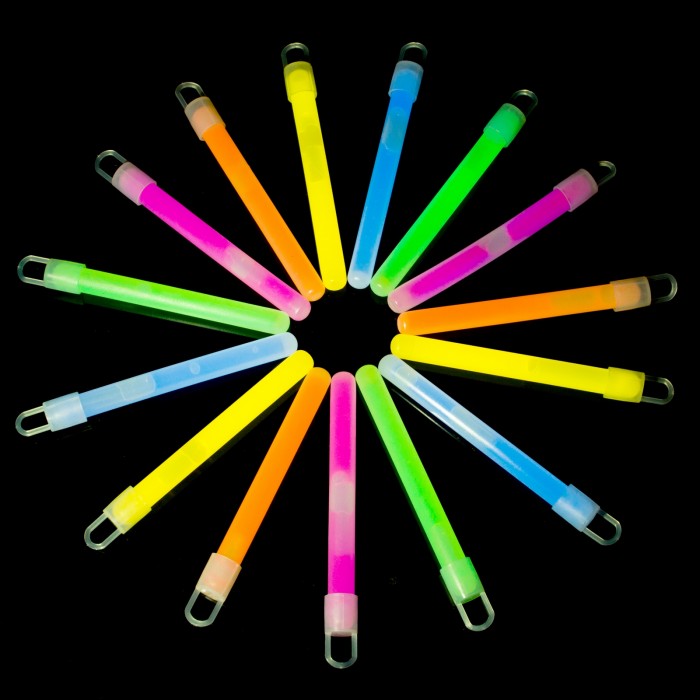Glow stick are popular items known for their bright and captivating glow. They are commonly used at parties, concerts, and various events to add a festive atmosphere. However, glow sticks have various uses beyond just entertainment. This article explores the science behind glow sticks, their multiple applications, safety considerations, environmental impact, storage and disposal, and how to make your own.
Contents
The Science Behind Glow Sticks
How Glow Sticks Work
Glow sticks produce light through a process called chemiluminescence, which occurs when chemical reactions generate light without producing heat. Inside a glow stick, there are two separate compartments: one containing a hydrogen peroxide solution and another containing a solution of phenyl oxalate ester and a fluorescent dye. When you bend the glow stick, the inner glass tube breaks, allowing these chemicals to mix. The resulting reaction produces light, which causes the stick to glow. The color of the glow depends on the type of fluorescent dye used.
Duration and Intensity
The duration and intensity of a glow stick’s luminosity depend on the concentrations of the chemicals inside. Higher concentrations can produce a brighter glow but for a shorter duration, while lower concentrations may result in a dimmer glow that lasts longer. Temperature also affects the performance of glow sticks. Warmer temperatures accelerate the chemical reaction, making the glow brighter but shorter-lived. Conversely, cooler temperatures slow down the reaction, resulting in a dimmer but longer-lasting glow.

Applications of Glow Sticks
Entertainment
Glow sticks are widely used in the entertainment industry. They are popular at concerts, raves, and festivals, where they enhance the visual experience. Party-goers often use glow sticks to create light trails, form glowing objects, and add to the festive atmosphere. They are also popular in theme parks and during holidays like Halloween and the Fourth of July. Their easy-to-use, disposable nature makes them a convenient option for one-time events.
Safety and Emergency Uses
Beyond entertainment, glow sticks serve valuable safety and emergency purposes. They are often included in emergency kits as a reliable light source during power outages or natural disasters. Unlike flashlights, glow sticks do not require batteries and are waterproof, making them useful in wet environments. They are also used by first responders and in military operations for signaling, marking locations, and providing illumination without generating heat or sparks, which can be crucial in hazardous conditions.
Safety Considerations
Handling and Usage
While glow sticks are generally safe, they do contain chemicals that can be harmful if mishandled. These chemicals, such as hydrogen peroxide and phenyl oxalate ester, can cause irritation to the skin and eyes if exposed. Therefore, it is crucial to ensure that children use glow sticks under adult supervision to prevent accidental breakage and exposure to the chemicals inside. Adults should ensure that glow sticks are used as intended and not bent or twisted excessively, which can lead to the inner glass tube breaking. If a glow stick does break and the liquid comes into contact with skin or eyes, it is important to act quickly. Rinse the affected area thoroughly with water for at least 15 minutes.
If the liquid gets into the eyes, seek medical attention immediately, as the chemicals can cause serious irritation and potential damage. Ingestion of the liquid should be avoided at all costs. If this occurs, do not induce vomiting; instead, seek medical advice immediately. Keep the packaging information handy, as it can provide valuable details to medical professionals about the chemicals involved. Educate children on the importance of handling glow sticks carefully and the potential risks associated with improper use.

Safe Disposal
Proper disposal of glow sticks is essential to prevent environmental contamination and protect wildlife. Glow sticks should not be punctured or burned, as this can release harmful chemicals into the environment. The combustion of these chemicals can produce toxic fumes, posing health risks to humans and animals. After using a glow stick, it should be sealed in a plastic bag to contain any residual liquid and prevent it from leaking. This step is crucial in preventing the chemicals from seeping into the ground and water sources.
Once contained, glow sticks should be disposed of in the regular trash. However, it is advisable to check with local waste management services for specific guidelines on disposing of products containing chemicals. Some communities may have designated drop-off points or special programs for disposing of hazardous materials, and glow sticks may be categorized under such programs. Proper disposal helps prevent chemical pollution and protects wildlife that might come into contact with discarded glow sticks. By following these guidelines, you can ensure that your use of glow sticks is both safe and environmentally responsible. Educating family members and friends about proper disposal practices can also contribute to a larger culture of environmental awareness and safety.
Environmental Impact of Glow Sticks
Chemical Composition
Glow sticks contain chemicals that can be harmful to the environment. When disposed of improperly, these chemicals can leach into the soil and water, causing pollution. The hydrogen peroxide and phenyl oxalate ester, along with the fluorescent dyes, are not biodegradable. As a result, they persist in the environment, contributing to chemical pollution and harming ecosystems.
Biodegradable Alternatives
As awareness of environmental issues grows, biodegradable glow sticks are being developed. These eco-friendly options use non-toxic, biodegradable materials that break down more easily in nature. While still in early stages of development, they offer a promising alternative to traditional glow sticks. By choosing biodegradable products, consumers can enjoy the benefits of glow sticks while minimizing their environmental footprint.
Storage and Longevity
Proper Storage
The longevity of glow sticks can be extended with proper storage. Store glow sticks in a cool, dark place, away from direct sunlight and heat sources. Exposure to high temperatures can trigger the chemical reaction prematurely, rendering the glow stick useless when needed. Sealed packages help protect the sticks from moisture and humidity, which can also affect their performance.
Maximizing Shelf Life
To maximize the shelf life of glow sticks, consider using vacuum-sealed packaging or silica gel packets to reduce moisture exposure. Check the expiration date on the packaging, as most glow sticks have a shelf life of one to four years. Rotate your stock regularly to ensure that you are using the oldest glow sticks first. By following these storage tips, you can ensure that your glow sticks are ready to use when you need them.

DIY Glow Sticks
Making Your Own
For those inclined towards DIY projects, making your own glow sticks can be a fun and educational activity. You will need hydrogen peroxide, a suitable phenyl oxalate ester, and a fluorescent dye. Carefully measure and mix the ingredients in a clear plastic tube, ensuring the proportions are correct to achieve the desired glow intensity and duration. Safety precautions are essential, as the chemicals involved can be hazardous if mishandled.
Experimenting with Colors
Experimenting with different dyes can produce a range of vibrant colors. Fluorescent dyes are available in various shades, from traditional neon colors to softer pastels. You can create unique color combinations by mixing different dyes. Document your experiments to understand how different ratios of chemicals and dyes affect the glow. This hands-on approach provides valuable insights into the science of chemiluminescence and can be an engaging way to learn more about chemistry.
Glow sticks are fascinating devices with a wide range of applications, from festive entertainment to crucial emergency uses. Understanding the science behind them, recognizing their safety considerations, and considering their environmental impact can help you make informed decisions about their use. Proper storage and disposal are key to maximizing their benefits while minimizing any negative effects. If you’re feeling adventurous, making your own glow sticks can be an educational and enjoyable experience. By taking these factors into account, you can safely enjoy the captivating world of glow sticks while being mindful of their impacts.


